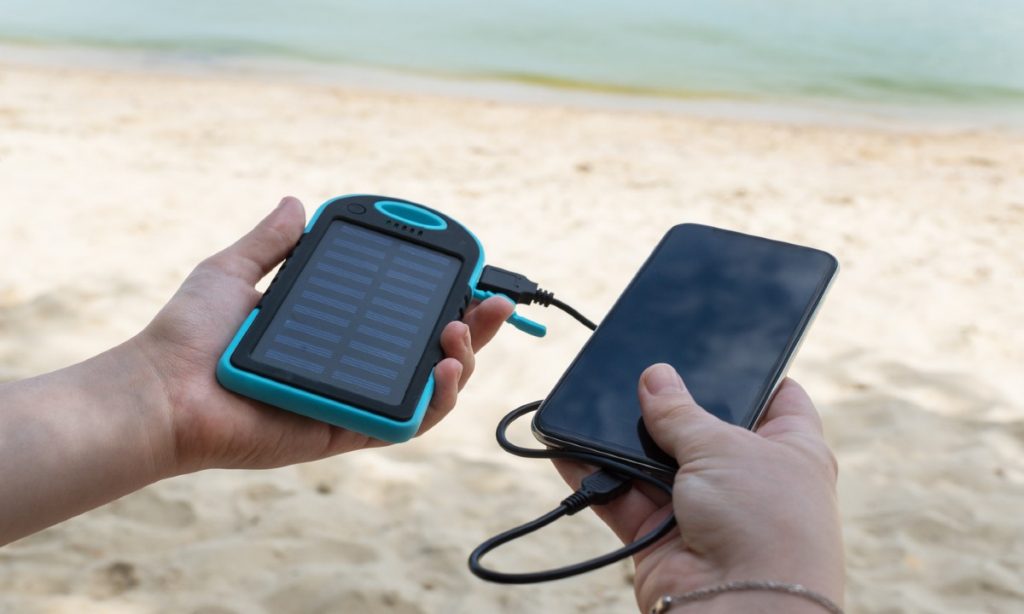Do Solar Powered Phone Chargers Work at Night?

A solar powered phone charger is a device that uses sunlight to generate electrical power. This power, which is stored in the charger’s battery, can then be used to charge a second device’s battery. Since our lives revolve around cell phones, having an accessory like this is no less than a blessing. We can keep our phone batteries juiced up at all hours without ever having to plug any cables in. In this article, we’ll explain how these chargers work and whether their operations extend to nighttime.
How Do Solar Powered Phone Chargers Work?
There are a variety of solar charger designs available on the market, but most utilize photovoltaic (PV) cells to generate the necessary power. PV cells are made from semiconductor materials like silicon and they create an electrical current when exposed to sunlight.
This current is then stored in a battery pack or directly routed to the device being charged. Solar chargers typically have a built-in regulator to ensure the correct amount of power is delivered to the device. Many also come with USB ports for charging multiple devices at once.
How Long Does It Take To Charge a Phone With a Solar Charger?
Before you can charge your phone with a solar powered charger, you need to power up the charger. On average, a good-quality solar charger takes about 25 to 50 hours to charge completely in unobstructed sunlight. This duration may vary, however, depending on the type of charger you have. If your charger has a single solar panel, it may take longer to power up.
After your charger is fueled up, you can use it to charge your phone. A phone can be charged by connecting the charger’s USB end to the solar charging device and the other end to your phone. The charging duration of your phone varies depending on its battery size.
Will a Solar Phone Charger Work at Night?
Solar phone chargers will work at night as long as they have built-in batteries that store the energy generated by the sun. Without this feature, these chargers will only work during the day when there is sunlight to generate power.
So, getting a charger with built-in batteries is better if you want to use it during the night, too. To get the most out of your solar charger, it’s essential to place it in a location where it will receive direct sunlight for most of the day. Additionally, you can increase the charging speed by using a device with a higher power rating.
Besides not working at night without built-in batteries, they may not work well in cloudy or shady conditions, and they can take longer to charge a device than a traditional charger. But despite these minor disadvantages, solar chargers offer excellent charging during daytime and even nighttime with a built-in battery reservoir.
Conclusion
Solar phone chargers offer an eco-friendly way to charge multiple devices. While their average charging time is longer than traditional chargers, you can improve this timing by keeping the device under direct sunlight.
These chargers will not work at night unless they have built-in batteries. In other words, they will not charge your phones if they don’t have enough charging stored. So, if you’re interested in using these chargers at night, make sure you get ones with built-in batteries.
